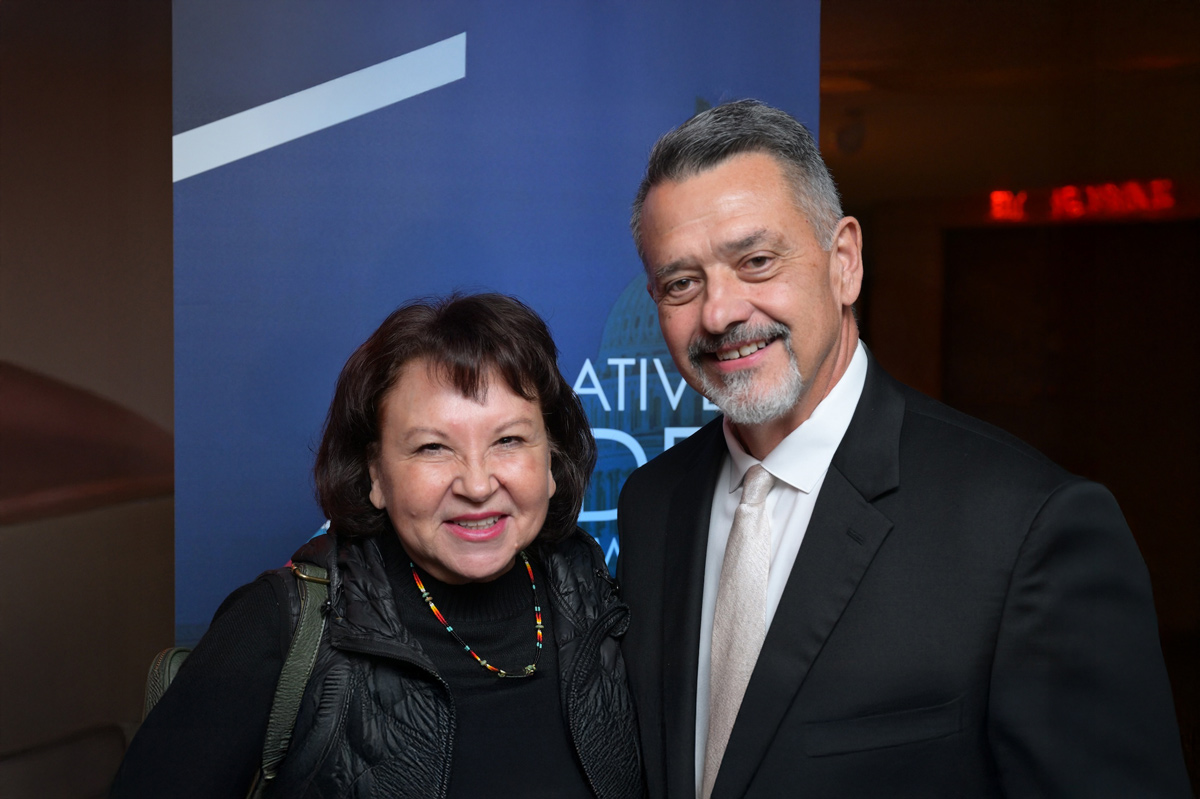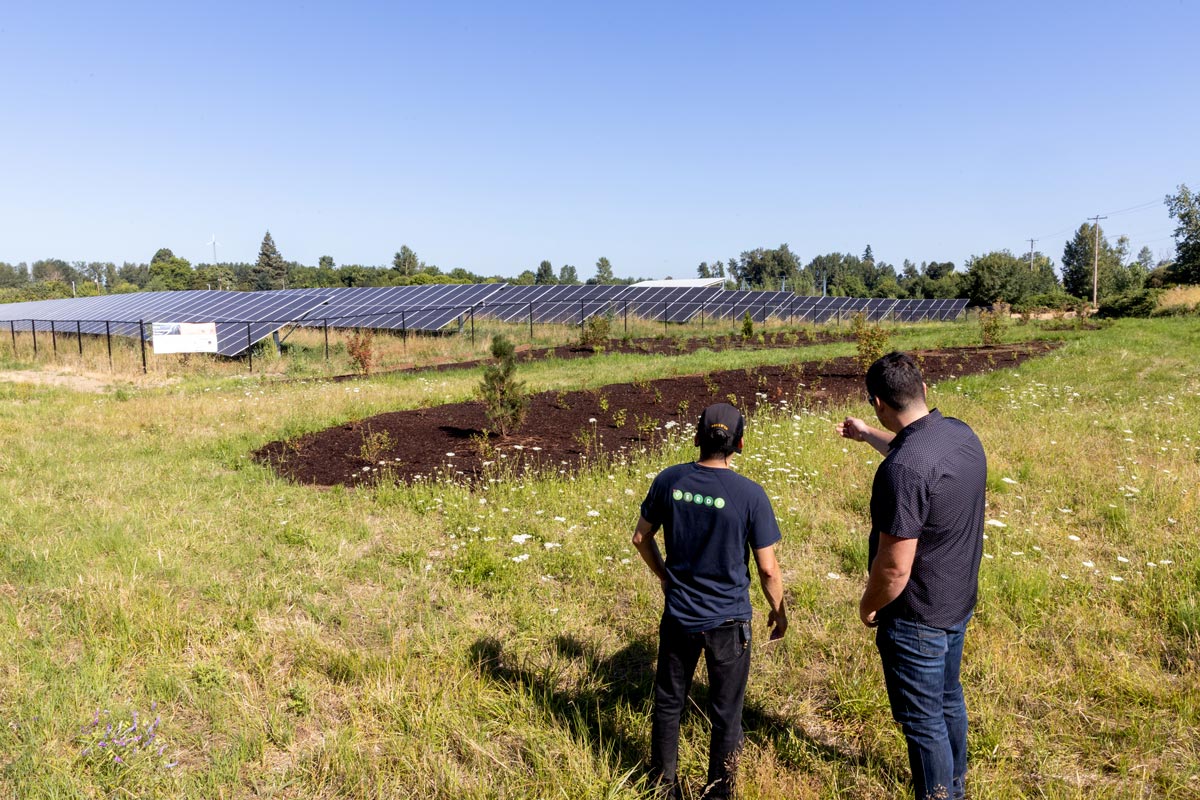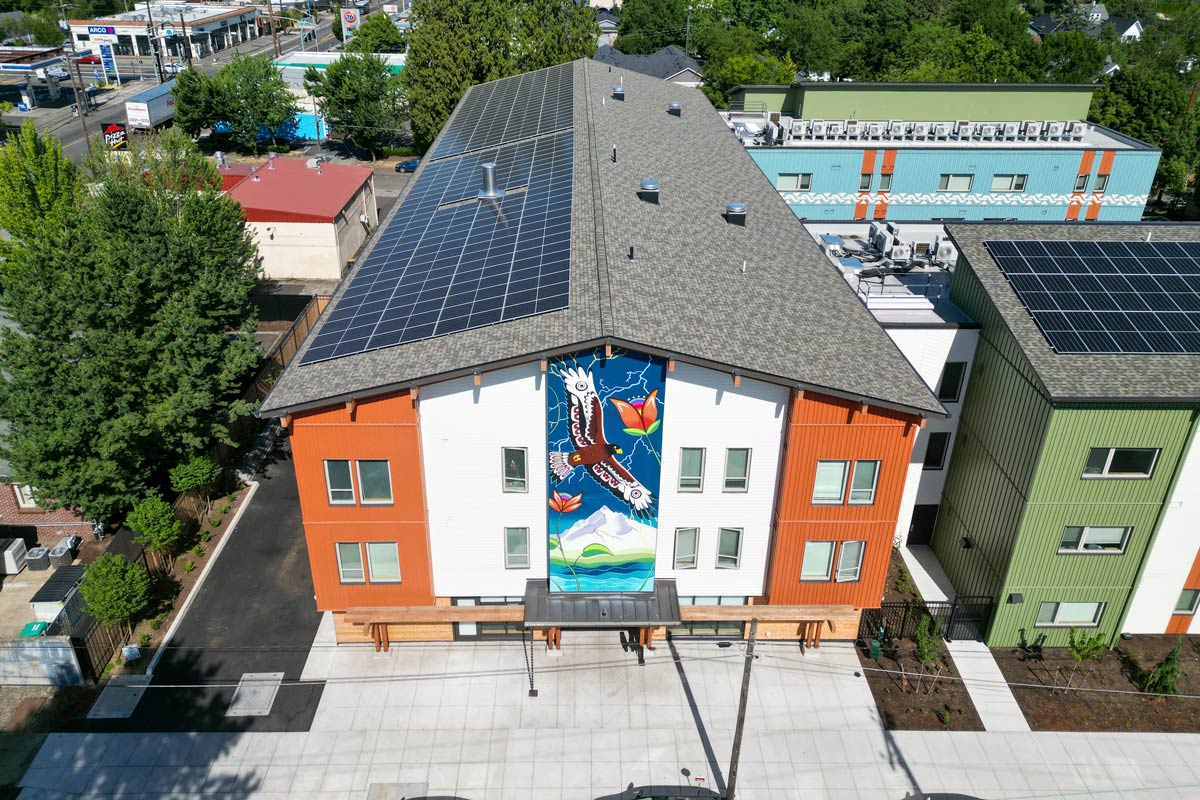We want to be sure this work continues to grow, despite current political and economic headwinds. That’s why we decided last quarter to grant NCN an additional $300,000 on top of a $200,000 general operating grant from 2024.
Native CDFIs are generally able to leverage federal dollars eight to one—making them a great investment in building generational assets.
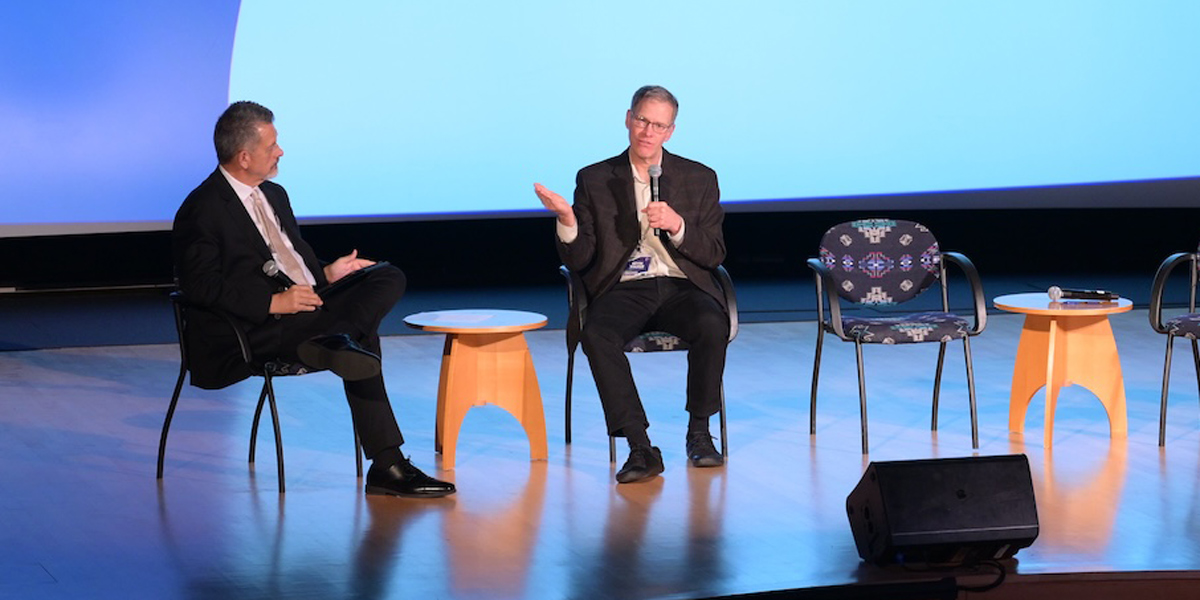
Native CDFI Network’s Pete Upton (left) interviews Foundation president and CEO Kevin Walker during an event in DC earlier this year. Photo courtesy of NCN.
“To have jobs, you need small businesses. And small businesses need banking resources. These are key areas where Native CDFIs step in to amplify the ripple effect of investments in Indian Country.”
Pete Upton
Chairperson and CEO, NCN
Executive Director, Native360 Loan Fund
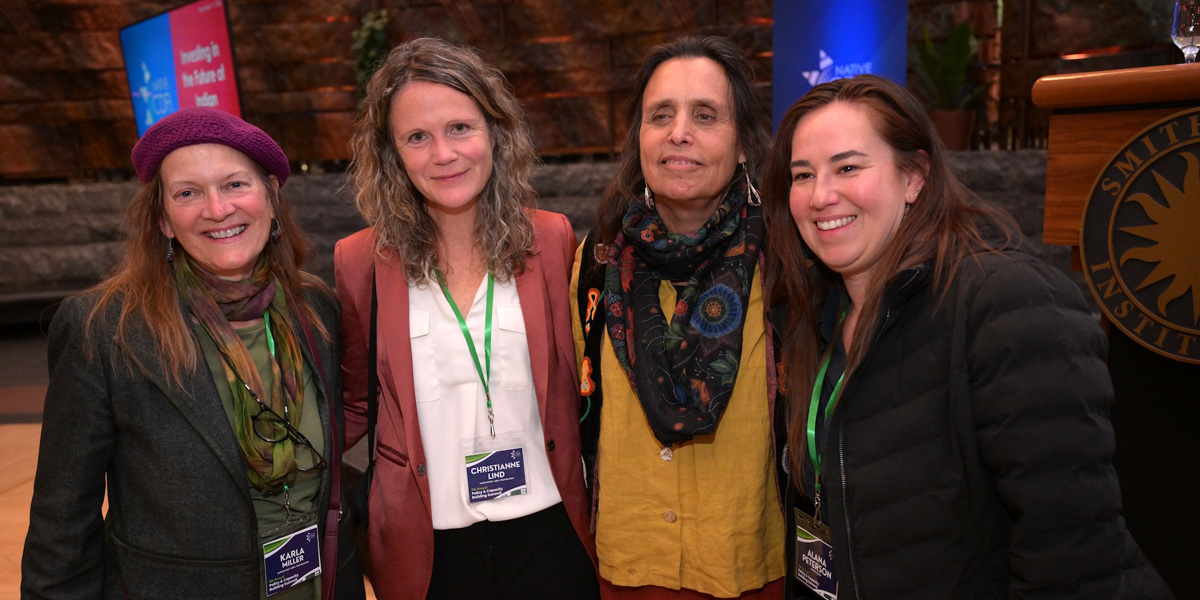
Left to right: Karla Miller, retired Foundation vice president, program; Christianne Lind, Foundation program officer; Wynona LaDuke Anishinaabekwe (Ojibwe), Native American environmental activist and author; and Alana Peterson (Tlingit), Spruce Root executive director. Photo courtesy of NCN.

